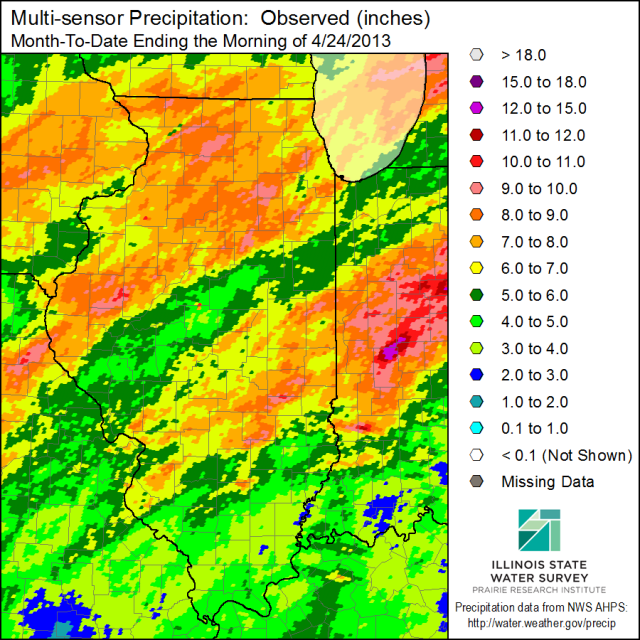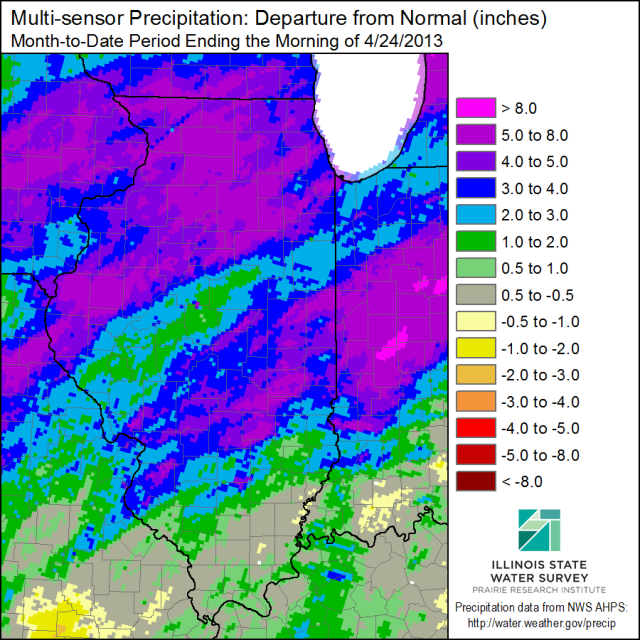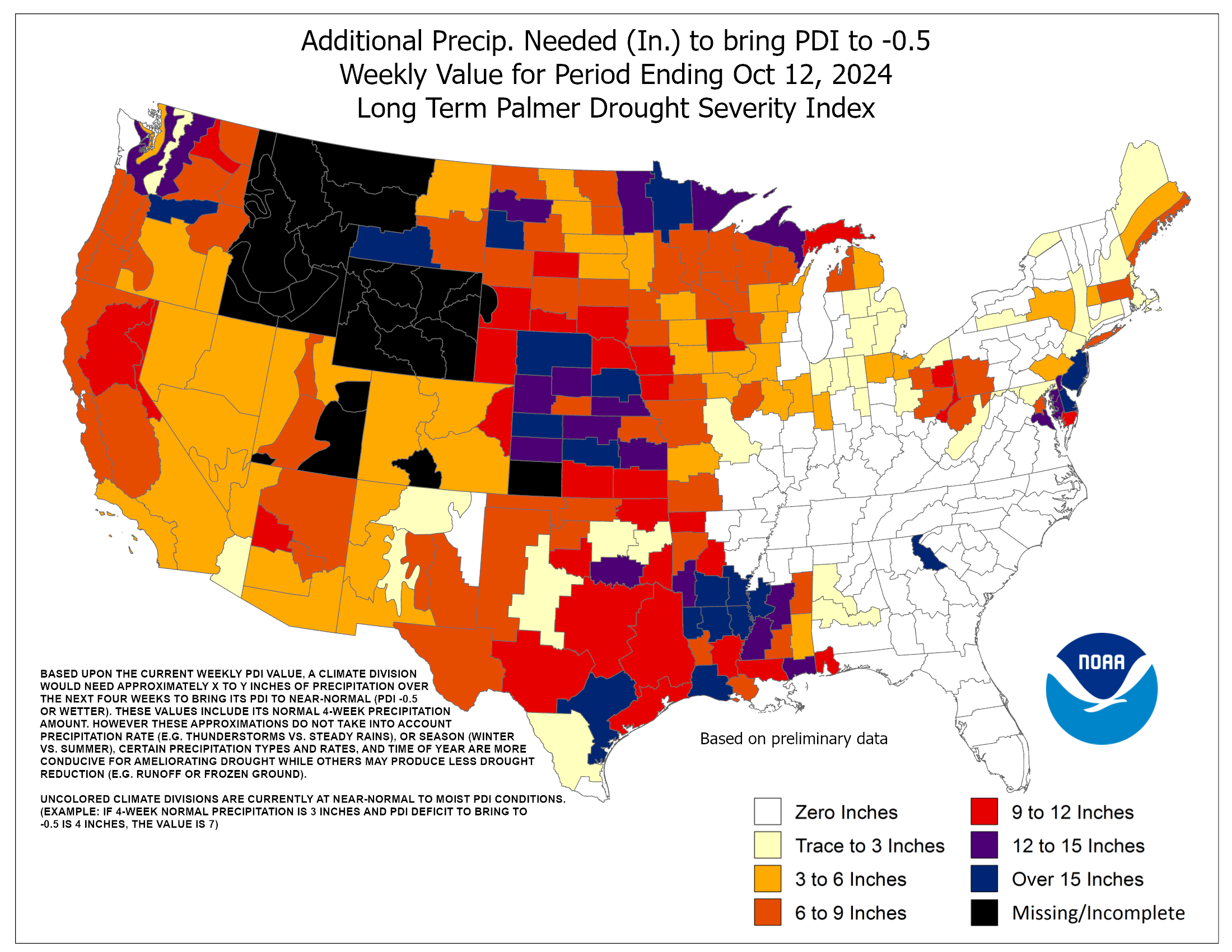Based on preliminary data, this April in Illinois is already the 4th wettest on record with 6.58 inches of precipitation. Average statewide precipitation for April is 3.77 inches. So we are already almost two inches above average.
According to the NWS forecast, more rain is expected across southern Illinois on Friday and Saturday. Therefore, it is possible that we will move up the list by the end of the month. In addition, some sites may have already reached their record for April, including the city of Chicago.
Top 5 Wettest Aprils
- 2011 with 7.40 inches
- 1957 with 7.13 inches
- 1927 with 6.95 inches
- 2013 with 6.58 inches
- 1944 with 6.50 inches
Precipitation Pattern Across the State
Here is how the precipitation has been distributed around the state, based on our multi-sensor precipitation product, with the actual amounts and the departures from average. Many parts of central and northern Illinois have more than double their average April precipitation (shades of purple in the second map).








